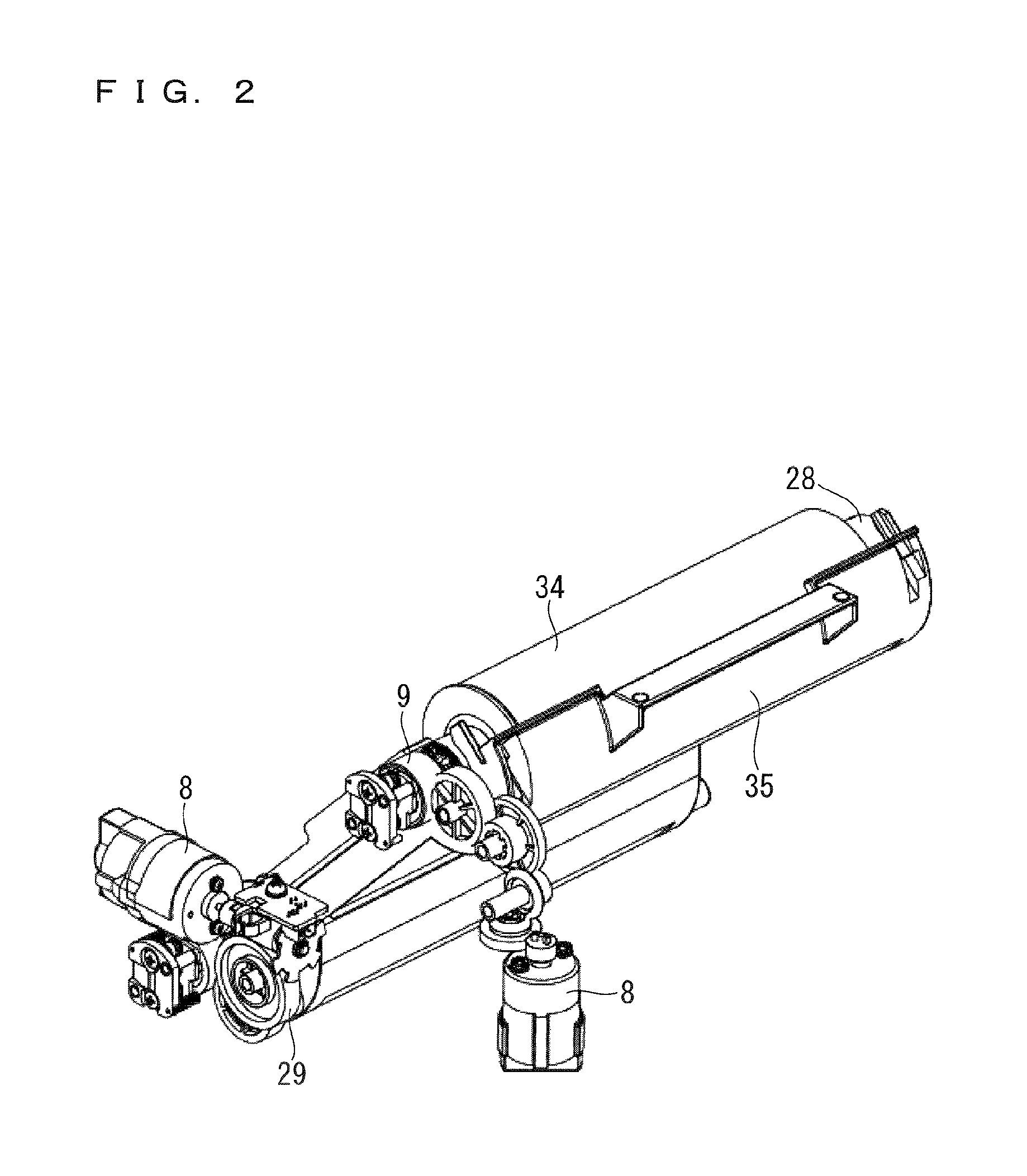Thermal transfer printer
a technology of thermal transfer printer and ink sheet, applied in the field of thermal transfer printer, can solve the problems of excessive thermal energy applied to the ink sheet per unit area, inability to meet the needs of printing, etc., to suppress the generation of printing creases on the surface of printed matter, reduce the damage of the ink sheet
- Summary
- Abstract
- Description
- Claims
- Application Information
AI Technical Summary
Benefits of technology
Problems solved by technology
Method used
Image
Examples
first preferred embodiment
[0022]FIG. 1 shows the structure of a thermal transfer printer of a first preferred embodiment. An ink sheet 34 wound around ink bobbins 28 and 29, and a sheet of paper 27 wound around a paper roll 33, contact each other under pressure between a thermal head 6 and a platen roller 30. The thermal head 6 heats the ink sheet 34 to transfer ink applied to the ink sheet 34 onto the sheet of paper 27 being a target object of transfer. The sheet of paper 27 is conveyed by a grip roller 31 contacting a pinch roller 32 under pressure.
[0023]The grip roller 31 is driven by a grip roller-specific motor 11 (FIG. 3). A cam 10 (FIG. 3) is provided in the thermal head 6. The thermal head 6 is placed at a fixed position that can be controlled in response to the angle of rotation of the cam 10.
[0024]FIG. 2 shows a mechanism of conveying the ink sheet 34. The ink bobbins 28 and 29 are driven by an ink bobbin-specific motor 8. An ink cassette 35 housing the ink sheet 34 is attached to the ink bobbin 28...
second preferred embodiment
[0049]Like that of the first preferred embodiment, a thermal transfer printer of a second preferred embodiment includes a damage prediction part and a print control part. The structure, the basic print operation, and the damage prediction part of the thermal transfer printer of the second preferred embodiment are the same as those of the first preferred embodiment, so they will not be described again. In the second preferred embodiment, the print control part includes a print density controller that controls the density of a print image.
[0050]A print density is controlled by changing a reference table shown in FIG. 7. As is already described above, the reference table contains the gradation value of print data and the density of a print image in association with each other. It is assumed that the reference table generally determines the OD value based on a curve 20a. If the damage prediction part determines that damage will be generated, the print density controller changes the basi...
third preferred embodiment
[0053]Like that of the first preferred embodiment, a thermal transfer printer of a third preferred embodiment includes a damage prediction part and a print control part. The structure, the basic print operation, and the damage prediction part of the thermal transfer printer of the third preferred embodiment are the same as those of the first preferred embodiment, so they will not be described again. In the third preferred embodiment, the print control part includes a tension controller that controls tension on the ink sheet 34.
[0054]The ink sheet 34 receives tension applied to part thereof extending between the ink bobbin 29 toward which the ink sheet 34 is rolled up and the thermal head 6, and tension applied to part thereof extending between the thermal head 6 and the ink bobbin 28 to feed the ink sheet 34. In the instant specification, tensions applied to these parts are called roll-up tension and feed tension respectively. In the instant specification, “tension” is an inclusive ...
PUM
 Login to View More
Login to View More Abstract
Description
Claims
Application Information
 Login to View More
Login to View More - R&D
- Intellectual Property
- Life Sciences
- Materials
- Tech Scout
- Unparalleled Data Quality
- Higher Quality Content
- 60% Fewer Hallucinations
Browse by: Latest US Patents, China's latest patents, Technical Efficacy Thesaurus, Application Domain, Technology Topic, Popular Technical Reports.
© 2025 PatSnap. All rights reserved.Legal|Privacy policy|Modern Slavery Act Transparency Statement|Sitemap|About US| Contact US: help@patsnap.com



